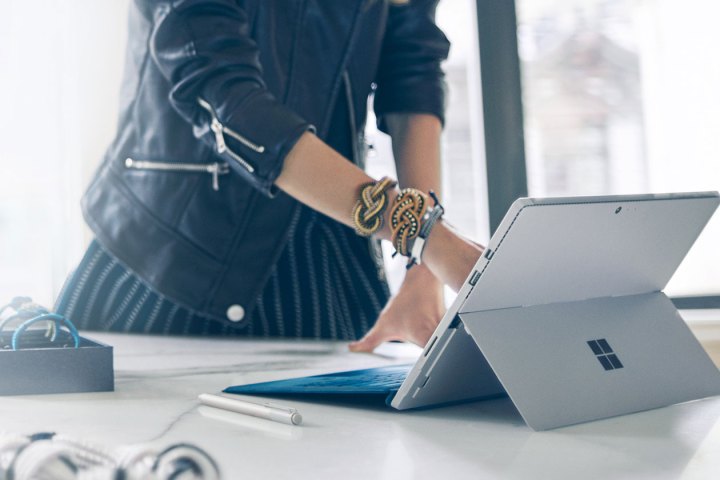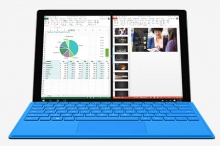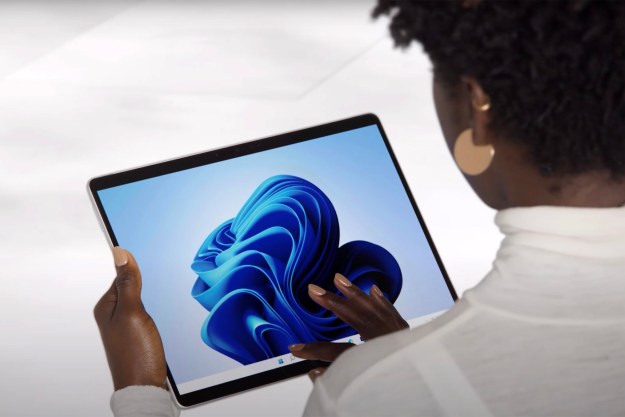
Unfortunately, it didn’t quite accomplish this the first time around. However, after a few iterations and growing popularity, other companies have taken notice. The past several weeks have seen both Apple and Google take to the stage with press conferences detailing their next line of devices — including their own takes on the all-in-one device.
Not to be outdone by its competitors, Microsoft has fired back with its own event, where it announced numerous new devices, including its newest laptop-tablet hybrid: the Surface Pro 4.
While Apple’s iPad Pro is certainly a major competitor, the real question is how the Surface Pro 4 compares to Google’s device, the Pixel C. Google has yet to offer anything remotely like the Pixel C, and we’re curious as to how it stacks up to the Surface Pro 4. Below, we look at the technical specification for both pieces of hardware, and give a detailed analysis regarding their power, design, price, and availability.
|
Microsoft Surface Pro 4 |
Pixel C |
|
| Size | 11.50 x 7.93 x .33 inches | 10 inches tall, other dimensions tba |
| Weight | 1.68 pounds | N/A |
| Display | 12.3-inch 267 ppi PixelSense touch display | 10.2-inch 308 ppi |
| Resolution | 2,736 x 1,824 | 2,560 x 1,800 |
| Operating System | Windows 10 Pro | Android 6.0 Marshmallow |
| Storage | 128GB, 256GB, 512GB, 1 TB SSD | 32GB, 64GB |
| Processor | Intel 6th gen Core m3, Core i5, and Core i7 | Nvidia Tegra X1 |
| RAM | 4GB, 8GB, 16GB | 3GB |
| Camera | Rear 8MP, Front 5MP | N/A |
| Connectivity | Wi-Fi, 4G LTE, Bluetooth 4.0 | Wi-Fi, Bluetooth (possibly more) |
| Sensors | Three-axis gyro, accelerometer, ambient light sensor, Magnetometer, fingerprint scanner in keyboard dock | Gyrometer, accelerator, ambient light sensor (possibly more) |
| Battery | Up to 9 hours of video playback | Up to 10 hours |
| Charger | USB 3.0 Type-C | USB Type-C |
| Marketplace | Windows Store | Google Play |
| Price | Starting at $899, up to $2,599 | $499 for 32GB, $599 for 64GB |
| Availability | October 6th | Holiday 2015 |
| DT review | Hands On | Hands-on |
Design
The Surface Pro 4 and the Pixel C present slightly different designs for the same basic tablet-laptop hybrid functionality.
Notably, both have external keyboards, and the design varies between the two. On the Pixel C, the Bluetooth keyboard (which should be noted is a $149 accessory, yet is omnipresent in most promotional material) is a magnetic peripheral that snaps to the edge of the Pixel C, and features a 135-degree hinge to provide the best viewing angle for the user. Rather ingeniously, the keyboard charges inductively from the tablet itself, eliminating the need for an external charger. When not in use, the keyboard snaps magnetically back of the tablet.
The Surface Pro 4’s Type Cover, on the other hand, is an updated design of the keyboard accessory previous Surface Pros have used. The new keyboard is lighter and thinner than previous iterations, but now features spaces between the keys, with a larger multi-touch track pad. This new Type Cover will run at $130, or $160 for the addition of a finger print reader. Both versions will also be compatible with the Surface Pro 3.
So, both have keyboards, but which one is the best option? If you’re looking for size, the Pixel C might be what you’re looking for. At 10-inches, it can fit on smaller tables and work areas more easily than the over 12-inch large Surface Pro.
On the flip side, the Surface Pro 4 is a thin device. At just .33 inches, it’s the thinnest Surface Pro yet. The thinner keyboard stays in line with this design philosophy, as does the tiny bezel on the front of the display, which we’ll get into in more detail below.
Which is better? A lot of this comes down to what your needs are, but the design of the SP4 makes for a much more impressive device. The thinness is remarkable given the hardware inside, and the large screen and tiny bezel are rather fetching.
Display
The Surface Pro 4’s tiny bezel opens up more real estate on the face of the tablet for the display — 12.3-inches, with 2,736 x 1,824 resolution, to be exact. This technically beats out the Pixel C’s 10.2-inch 2,560 x 1,800 screen; however, the Pixel C’s screen has 308 ppi versus the SP4’s 267 ppi screen. This could potentially make a difference at closer viewing proximity, making the Pixel C’s images appear crisper in comparison.
Performance
There are a few factors to consider when comparing the performance of both devices. First, the Surface Pro 4 will come in several different models, running either an Intel Core m3, i5, or i7 processor, and anywhere from four to 16GB of RAM. To make a blanket statement regarding the Surface Pro 4’s performance would be disingenuous, as it will likely comes down to the hardware of that particular model. Second, both are running different OS — Windows 10 Pro on the Surface Pro 4, and Android 6.0 on the Pixel C. Each has its own pros and cons, but the primary issue is how well it can handle applications.
The Pixel C uses the Nvidia Tegra X1 chip and 3GB RAM, which is is better than the hardware one would find in the Nvidia Shield tablet, which was designed specifically for gaming. That said, running Android on a laptop has proven to be messy in the past, and it’s yet to be seen if the OS and apps will be properly optimized to take full advantage of its hardware.
At the highest price point, the Surface Pro sports a sixth generation Core i7, 16GB RAM, and 1 TB of storage, making for a hybrid tablet that begins to approach desktop-levels of power. Even at the entry level, an Intel Core m3 and 4GB
Who are we going with? This is a tough one, as always when talking about upcoming hardware. On the one hand, we’ve seen what previous Surface Pros can do, and if Microsoft makes good on its claims that the SP4 is 30 percent than the SP3, we’re looking at an impressive device. On the other, the Pixel C’s true performance level is a bit of a question mark, especially with regards to how Android will hold up running on such a device, even with the Tegra X1 chip. That said, we look forward to finding out. For now, though, we’re willing to bet our money behind the SP4’s larger RAM and storage, and Windows 10 Pro OS.
Extras
There’s an obvious difference between the SP4 and the Pixel C worth discussing, and that’s the SP4’s Surface Pen accessory. This is new Pen has an eraser that actually erases (the previous version didn’t — a source of jabs during the unveiling event), and acts as a way to interact with Windows 10 and Cortana.
Does the Pixel C feature such an accessory? Sadly, no. But that’s also not necessarily the type of device the Pixel C is aiming to be. Keyboard aside, its distinct lack of excess peripherals and features makes it a much simpler and straight forward hybrid. The Surface Pen is included with the SP4, and will likely catch your eye if you’re looking for the type of functionality a stylus such this can offer.
Price & Availability
If you’re in need of a new all-in-one, and are looking to buy are soon as possible, the SP4 is available right now. The catch is that the SP4 will likely pack quite the wallop on your bank account, starting at $899 and reaching $2,199 for the more powerful models. This is before you factor in the $130-$160 Type cover keyboard.
If you’re willing to wait, Google has promised the Pixel C will be released in “holiday 2015.” Your guess is as good as ours with regards to an exact date, but we do know an exact price: $499 for 32GB storage or $599 for 64GB storage (plus and extra $149 for the magnetic keyboard). That’s quite a bit cheaper than the SP4, but reflects the somewhat less impressive hardware and smaller size.
Conclusion
Overall, the SP4 seems to have the edge over the Pixel C on paper. Of course, when compared side-by-side, it’s possible there could be caveats to consider that we won’t know for certain until we have the upcoming Pixel C in our hands. Until then, based upon the numbers and features, and our analysis thereof, we’re confident in giving the nod to the Surface Pro 4.
Editors' Recommendations
- Surface Pro 10: all the major changes rumored for the new model
- Should you buy the Surface Pro 9, or wait for the Surface Pro 10?
- The Surface Pro 9 embraces ARM chips and a splash of fresh color
- Microsoft Surface October Event: Surface Pro 9 and everything else we expect
- Microsoft confirms Surface event for October 12, Surface Pro 9 expected



